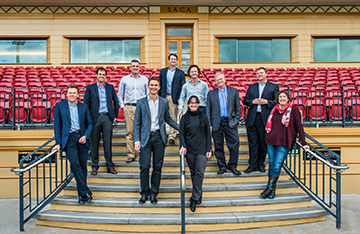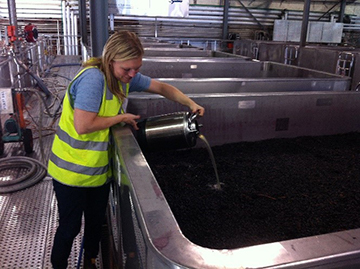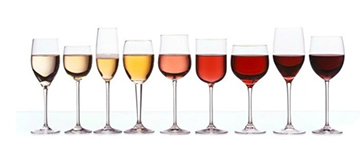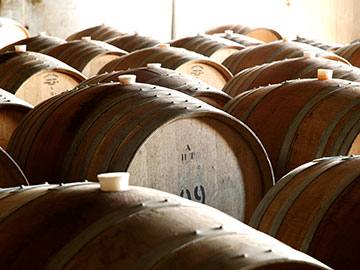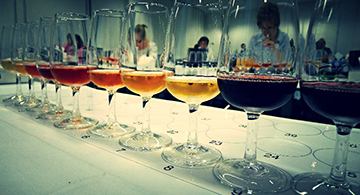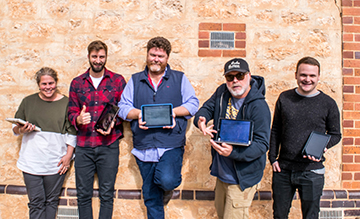Using magnetic nanoparticles for protein stabilisation
Bentonite fining to remove haze-forming proteins is a key step in the production of white and rosé wines, but has some drawbacks including wine losses and waste disposal issues. A new separation technology is showing potential as a bentonite alternative.
The technique uses magnetic nanoparticles – nanometre-scale particles that can be moved around using magnetic fields. Different coatings can be placed on these particles that allow them to bind to different compounds. In a recently published AWRI study, a coating designed to specifically bind haze-forming wine proteins was used. The coated particles were placed in heat-unstable wine, where the proteins bound to the nanoparticles’ surfaces. The particles were then able to be removed from the wine using a magnet.
Testing of the wine following the treatment found that the haze-forming proteins were removed, even from wines with very high protein content. Other components, such as wine phenolics, were unaffected. This technique therefore has potential to be used in the wine industry as an alternative to bentonite fining or could find applications in other areas such as water treatment or biotechnology.
The full paper detailing these results is accessible via the AWRI library: Mierczynska-Vasilev, A., Boyer, P., Vasilev, K., Smith, P.A. A novel technology for the rapid, selective, magnetic removal of pathogenesis-related proteins from wines. Food Chem. 232: 508-514.; 2017. |
Unlocking wine flavour during tasting
A long persistent palate is a hallmark of high quality wine and recent research may have identified the wine compounds responsible for this characteristic. The work showed that glycosides present in wine can break down in the mouth when a wine is tasted, contributing to lingering fruity or floral flavour. A glycoside consists of a flavour molecule bound to a sugar molecule that renders it flavourless. Previously, glycosides had been thought not to contribute to wine flavour, as it was believed they needed the action of fermentation enzymes or slow chemical reactions during ageing to break them apart and release the flavour molecule.
Sensory panellists tasted samples of glycosides from white wines and analysis showed that bacterial enzymes in saliva could unlock the bound flavour compounds in the glycosides, releasing a wave of flavour that continued after the wine was swallowed.
The amount of these glycosides in a wine could perhaps be used by winemakers as a quality marker, indicating the potential for a wine to have a long palate. The full paper detailing these results is accessible via the AWRI library: Parker, M., Black, C.A., Barker, A., Pearson, W., Hayasaka, Y., and Francis, I.L. 2017. The contribution of wine-derived monoterpene glycosides to retronasal odour during tasting. Food Chem. 232, 413-424. |
Order the latest AWRI staff publications online
Accessing the latest AWRI publications is easy. Visit the AWRI Publications web page to:
- View the 10 most recent AWRI staff publications and order the articles online from the AWRI Library
- Search the staff publications database
- Read the full-text of ‘Technical Notes’ from Technical Review (PDF format)
- Read the full-text of ‘AWRI reports’ published in Wine & Viticulture Journal (PDF format).
A full list of AWRI publications published since the last eNews is included below:
1901 Hayasaka, Y., Black, C.A., Hack, J., Smith, P. Structural characterization of reaction products of caftaric acid and bisulfite present in a commercial wine using high resolution mass spectrometric and nuclear magnetic resonance techniques. Food Chem. 230: 99-107; 2017.
1902 Corsi, A.M., Cohen, J., Lockshin, L., Williamson, P. Testing lexical equivalences for wine flavours in emerging markets: do hawthorns taste like blackberries? Food Qual. Pref. doi: 10.1016/j.foodqual.2017.03.011: 28 p.; 2017.
1903 Holdstock, M. Ask the AWRI: Taints in wine. Aust. N.Z. Grapegrower Winemaker (638): p. 64; 2017.
1904 Mierczynska-Vasilev, A., Boyer, P., Vasilev, K., Smith, P.A. A novel technology for the rapid, selective, magnetic removal of pathogenesis-related proteins from wines. Food Chem. 232: 508-514.; 2017.
1905 Parker, M., Black, C.A., Barker, A., Pearson, W., Hayasaka, Y., Francis, I.L. The contribution of wine-derived monoterpene glycosides to retronasal odour during tasting. Food Chem. 232: 413-424; 2017.
1906 Nguyen, T.T., Barber, A.R., Smith, P., Luo, X., Zhang, W. Application and optimization of the highly efficient and environmentally-friendly microwave-intensified lactic acid demineralization of deproteinized Rock lobster shells (Jasus edwardsii) for chitin production. Food Bioprod. Process. 102: 367-374; 2017.
1907 Capello, M.S., Zapparoli, G., Logrieco, A., Bartowski, E.J. Linking wine lactic acid bacterial diversity with wine aroma and flavour. Int. J. Food Microbiol. 243: 16-27; 2017.
1908 Varela, C., Barker, A., Tran, T., Borneman, A., Curtin, C. Sensory profile and volatile aroma composition of reduced alcohol Merlot wines fermented with Metschnikowia pulcherrima and Saccharomyces uvarum. Int. J. Food Microbiol. 252: 1-9; 2017.
1909 Ristic, R., van der Hulst, L., Capone, D.L., Wilkinson, K.L. Impact of bottle aging on smoke tainted wines from different grape cultivars. J. Agric. Food Chem. doi: 10.1021/acs.jafc.7b01233: 27 p.; 2017.
1910 Nordestgaard, S. Gentle or intense grape crushing? Aust. N.Z. Grapegrower Winemaker (639): 77-82; 2017.
1911 Cowey, G. Ask the AWRI: Adding water to high sugar must. Aust. N.Z. Grapegrower Winemaker (639): 88-89; 2017.
1912 Longbottom, M. Fellows of the ASVO. Wine Vitic. J. 32(2): p. 10; 2017.
1913 Bindon, K., Smith, P., Schulkin, A., Dambergs, B., Kassara, S., Barter, S., Solomon, M., Cynkar, W., Capone, D., McRae, J., Francis, L., Robinson, E., Johnson, D. Exploring the potential for grape objective measures to predict wine grade and style. Wine Vitic. J. 32(2): 46-47; 2017.
1914 Dry, P. Durif. Wine Vitic. J. 32(2): p. 55; 2017. |


